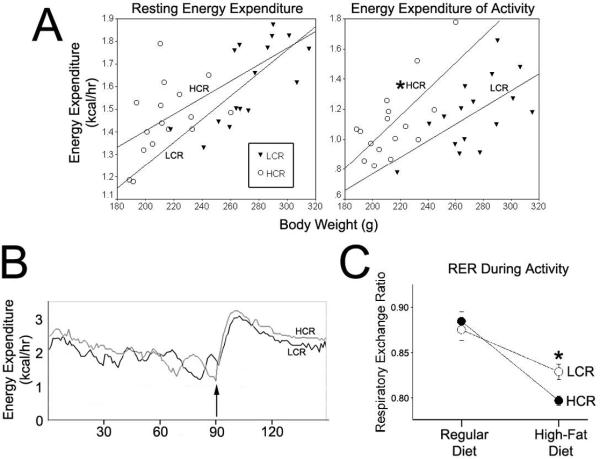Figure 3.
Energy expenditure of activity (EEA) and resting energy expenditure (REE) were measured in high-capacity rats (HCR) and low-capacity rats (LCR). (A) Energy expenditure during resting and activity in HCR and LCR (collapsed across diet) according to body weight. Energy expenditure of activity was significantly greater in the HCR (*significantly different effect of selected line after body weight, the covariate, was accounted for), indicating that they had a lower fuel economy of activity than LCR. (B) The energy expenditure during resting in the treadmill and while waling at 7 meters/min (arrow indicates start time) in one HCR (gray line; 216 g) and one LCR (black line; 218g); final EEA = EEA+REE − REE. (C) On the high-fat diet, respiratory exchange rate (RER) was significantly lower in the HCR than HCR on the high-fat diet, indicating increased use of lipid as fuel during activity in these rats.

